Mattresses, bedding and more — 5 sustainable shopping tips for non-toxic sleep this Earth Day
From one eco-conscious shopper to another — follow these tips for a sustainable sleep set up

While refreshing your sleep set up with a new mattress, bedding and pillows can help you recreate a hotel feel that promises great sleep, it’s an industry that has a huge carbon footprint.
Why? Mattress production often involves manufacturing chemical, man-made materials that emit pollutants and waste that can not only harm the environment, but also your health.
The main culprit to be aware of is a group of compounds called VOCs (volatile organic compounds) that evaporate off products like mattresses, pillows, sheets and even other bedroom items like carpets. These pollute the air and can irritate the skin and airways.
Aside from this, the manufacturing process itself is hugely impactful, and not in a good way. Think about the thousands of miles travelled, the wasted products and environmental damage done to source materials.
I'm not saying you shouldn’t treat yourself to a new sleep set up. But there are ways to do it sustainably. And what better day to learn about these eco-friendly shopping tips than Earth Day — a day to celebrate our environment and raise awareness of the threats to it?
I'm sharing my five top tips to keep your sleep shopping sustainable so you can enjoy the best mattress for your sleep needs, and snuggle up in the coziest comforters without a guilty conscience.
5 ways to shop sustainably for your new sleep set up
1. Recycle your old mattress
First things first, if you’re replacing your mattress, what will you do with your old bed? Mattress disposal has long been an issue because of hygiene regulations that make it difficult to donate or sell an old bed.
Sign up to get the BEST of Tom's Guide direct to your inbox.
Get instant access to breaking news, the hottest reviews, great deals and helpful tips.
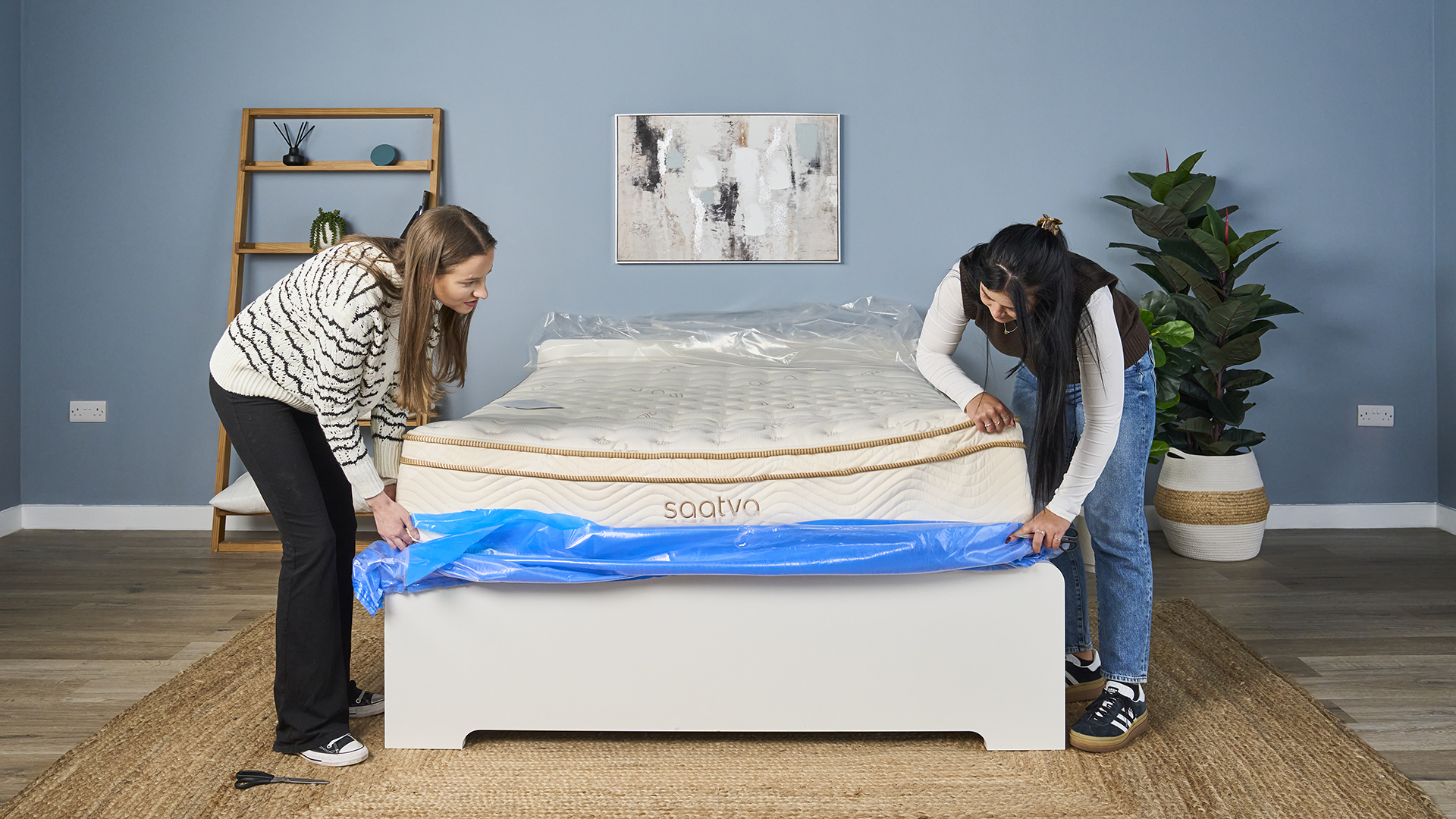
The solution? Recycling. Mattress materials can be reused for many different products, so rather than letting them go to waste, you can make sure every piece of your old bed gets as much life out of it as possible.
If you can’t fit your mattress in a car to take to a recycling center, you can often request for it to be picked up (for a fee) and taken to be recycled.
Alternatively, brands like Saatva will recycle your old mattress for you when you purchase a new bed from them as part of their white glove delivery service.
2. Shop for organic mattresses
Now, the exciting part — shopping for a new mattress. It can be a minefield trying to navigate the jargon of the mattress industry.
Edge support? Motion isolation? We don’t blame you if these phrases mean nothing. But, if you’re prioritizing sustainability, it's important to be able to spot the best organic mattresses.
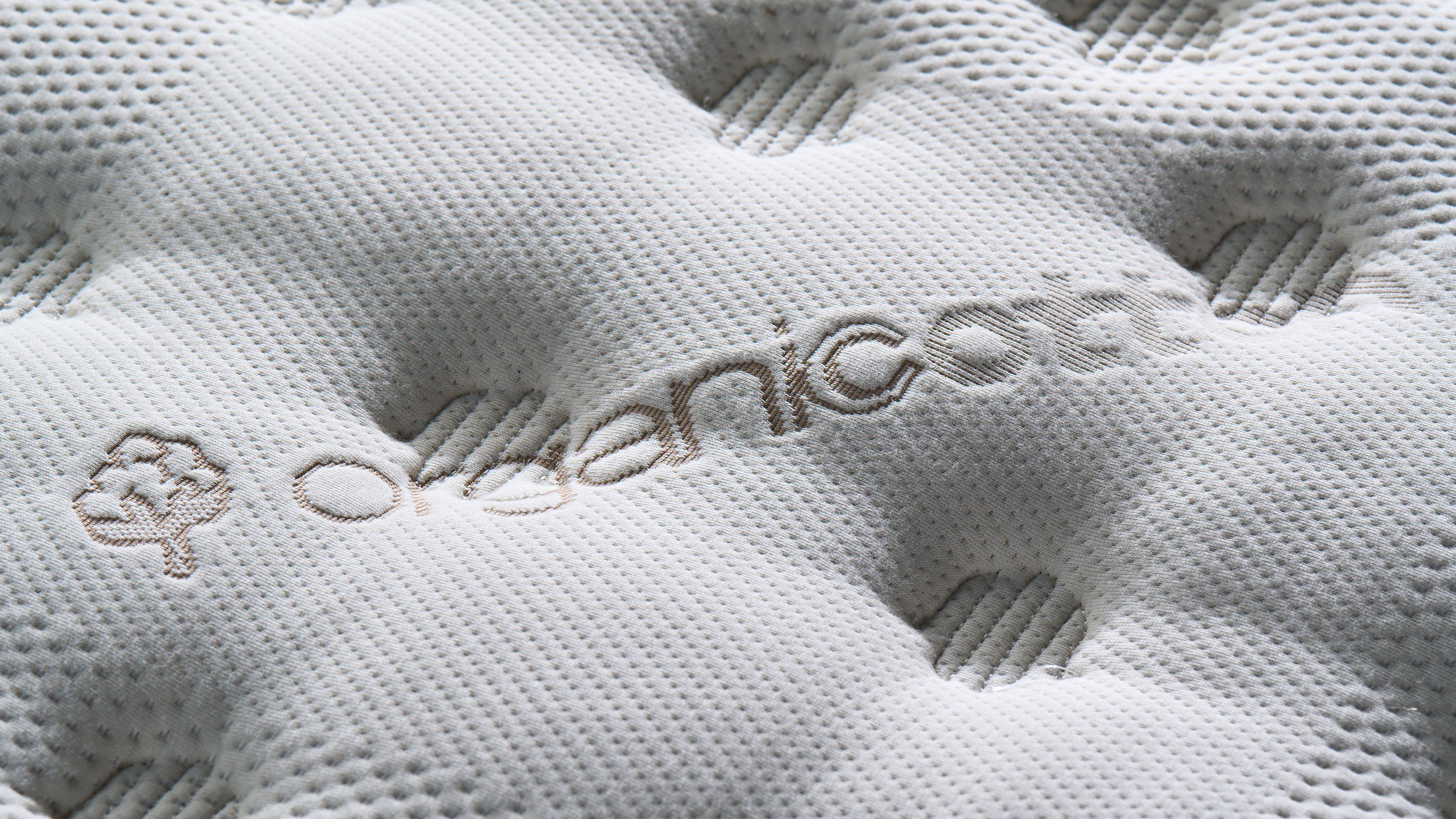
Using organic, natural materials is a great way to reduce the amount of waste and pollutants that come from mattress production. Organic mattresses that use latex also have a longer lifespan than other beds, with warranties often lasting up to 20 years.
Certified organic beds use materials that have been naturally sourced, which means there isn’t toxic, chemical waste produced during the manufacturing process.
Organic certification also takes into consideration ethical production practices for farmers and the environment, so you can rest easy knowing no one suffered to make your mattress.
3. Opt for natural bedding
The right bedding is just as important as the right mattress. While some may see it as the final cherry on top of the cake, I think it’s one of the most important factors in getting good sleep.
Your pillow is responsible for ensuring proper spine alignment throughout the night and your comforters and sheets can determine whether you sleep cool or overheat.
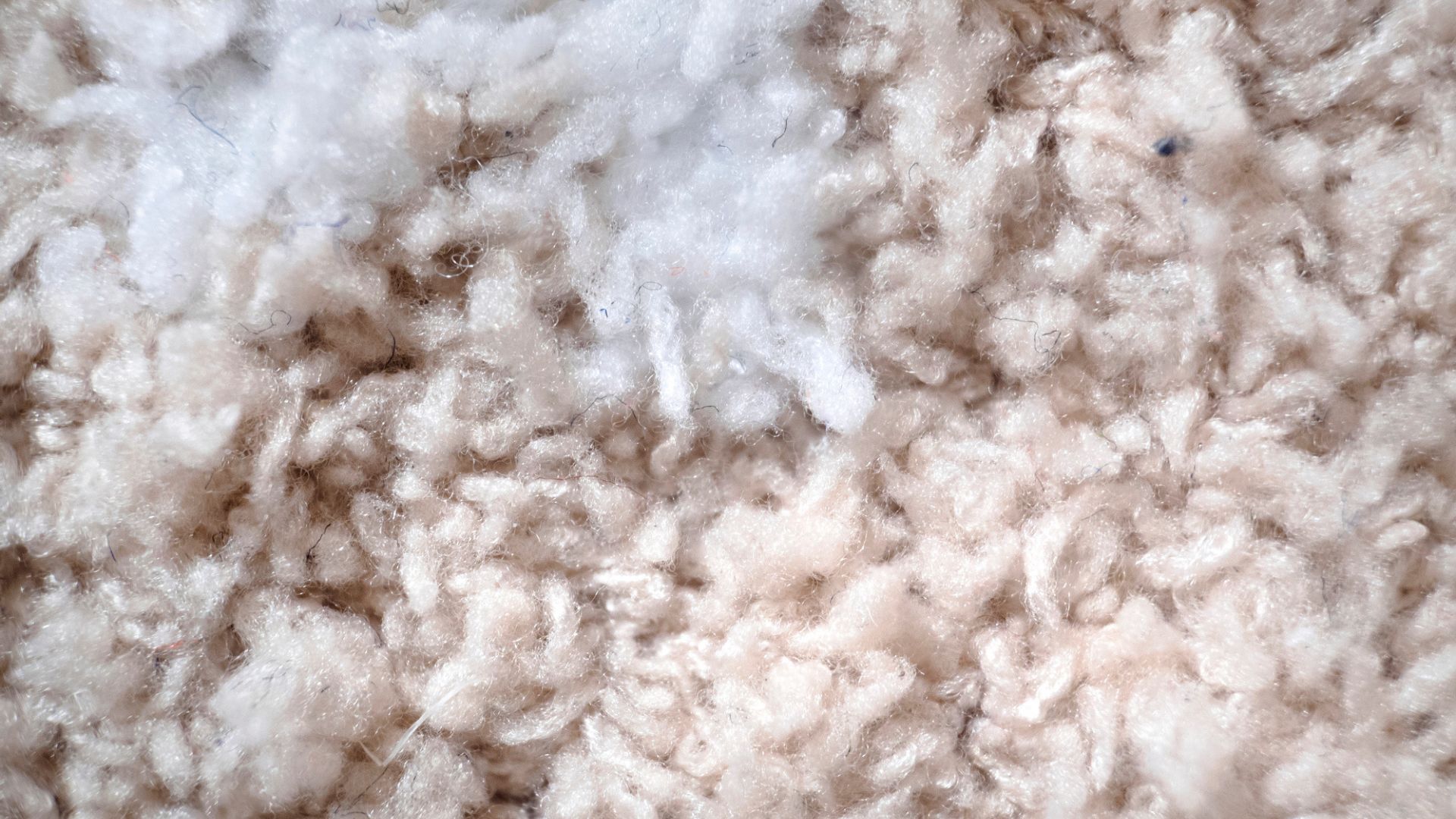
Similarly to mattresses, bedding can also produce VOCs, making it harmful not only to the environment, but also to your health. If children or those with asthma sleep next to bedding that’s off-gassing, it can irritate the sinuses and airways.
In fact, a recent study found that children are exposed to dangerous levels of these pollutants, which can have a detrimental impact on brain health.
To keep cool, healthy and eco-friendly opt for natural materials. GOTS certified cotton for sheets and GOTS certified wool for comforters are great, breathable and moisture wicking options. For the best pillows, consider a natural down filling, wool or GOLS certified latex.
4. Look out for certifications
You may see a list of mattress certification logos when shopping for sleep products.
While these are easy to disregard if you don't know what they mean, they actually tell you a lot about your mattress, the materials used and how sustainable it really is.
It's also what helps you determine whether a brand is just greenwashing or if they are actually taking active steps to reduce their impact on the environment.
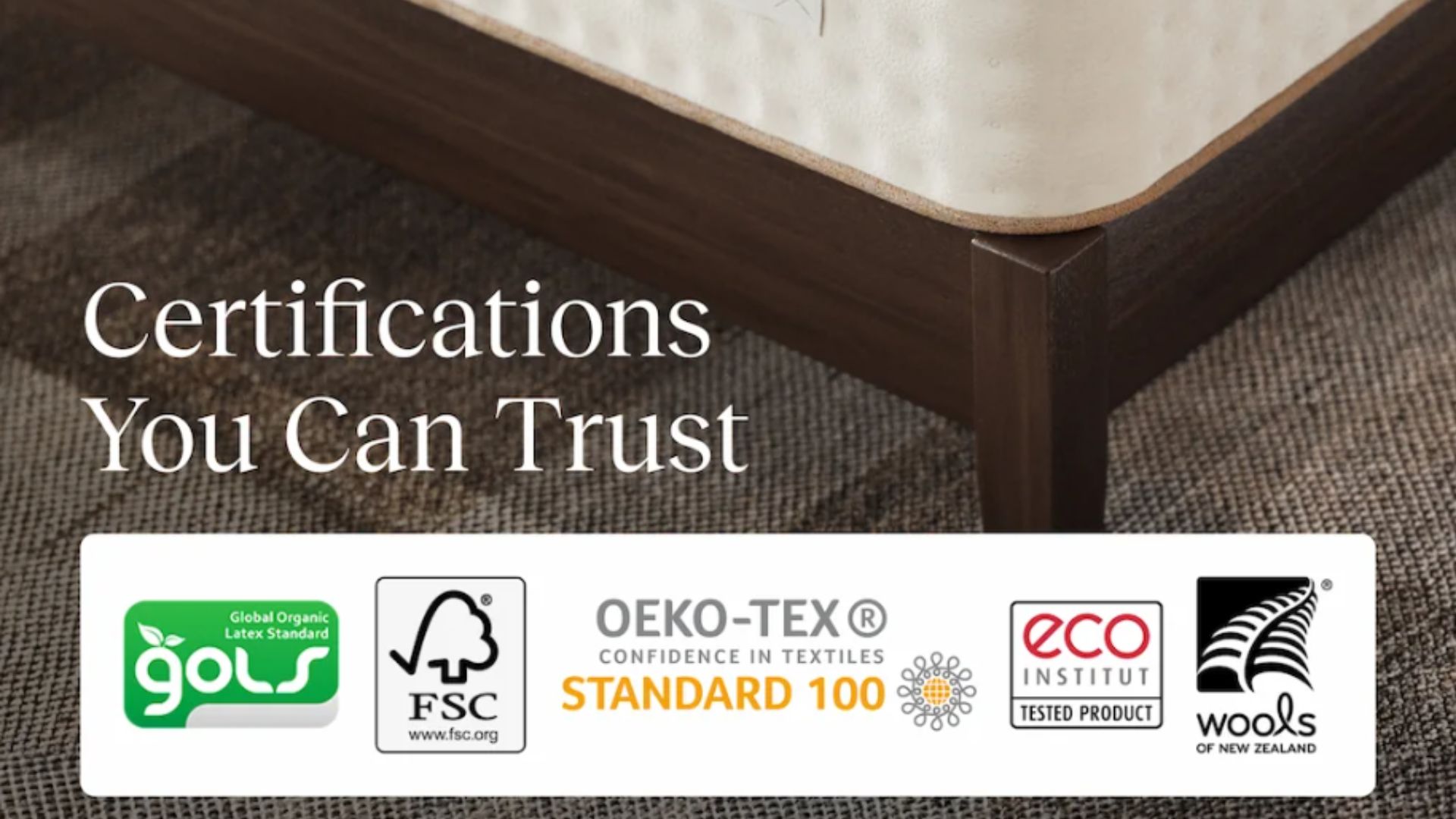
Some key environmental certifications to look out for include GREENGUARD to ensure industry standard low levels of indoor air pollution, OEKO-TEX for non-toxic materials, Eco-INTITUT for low emissions and MADE SAFE to guarantee the product is free from dangerous and toxic substances.
If you’re opting for a memory foam mattress, ensure the foam is Certi-PUR US certified as this will mean the polyurethane (what the foam is made from) has been tested and deemed safe both for the environment and your health.
5. Take care of your existing bed
While it’s always fun to take part in some much needed retail therapy, you should ensure you’ve used up all the life in your mattress and bedding before replacing them.
Even if you opt for an organic bed, a huge amount of energy goes into the manufacturing process, so only purchasing a new mattress when it’s absolutely necessary is the most sustainable option.
The best hybrid mattresses and the best memory foam mattress usually have a lifespan of around 7-10 years, and often come with a warranty that covers this. However, cheaper mattresses will wear more quickly. But taking good care of your bed will help it last longer.
Using one of the best mattress protectors to stop spills from damaging the materials is a good place to start.
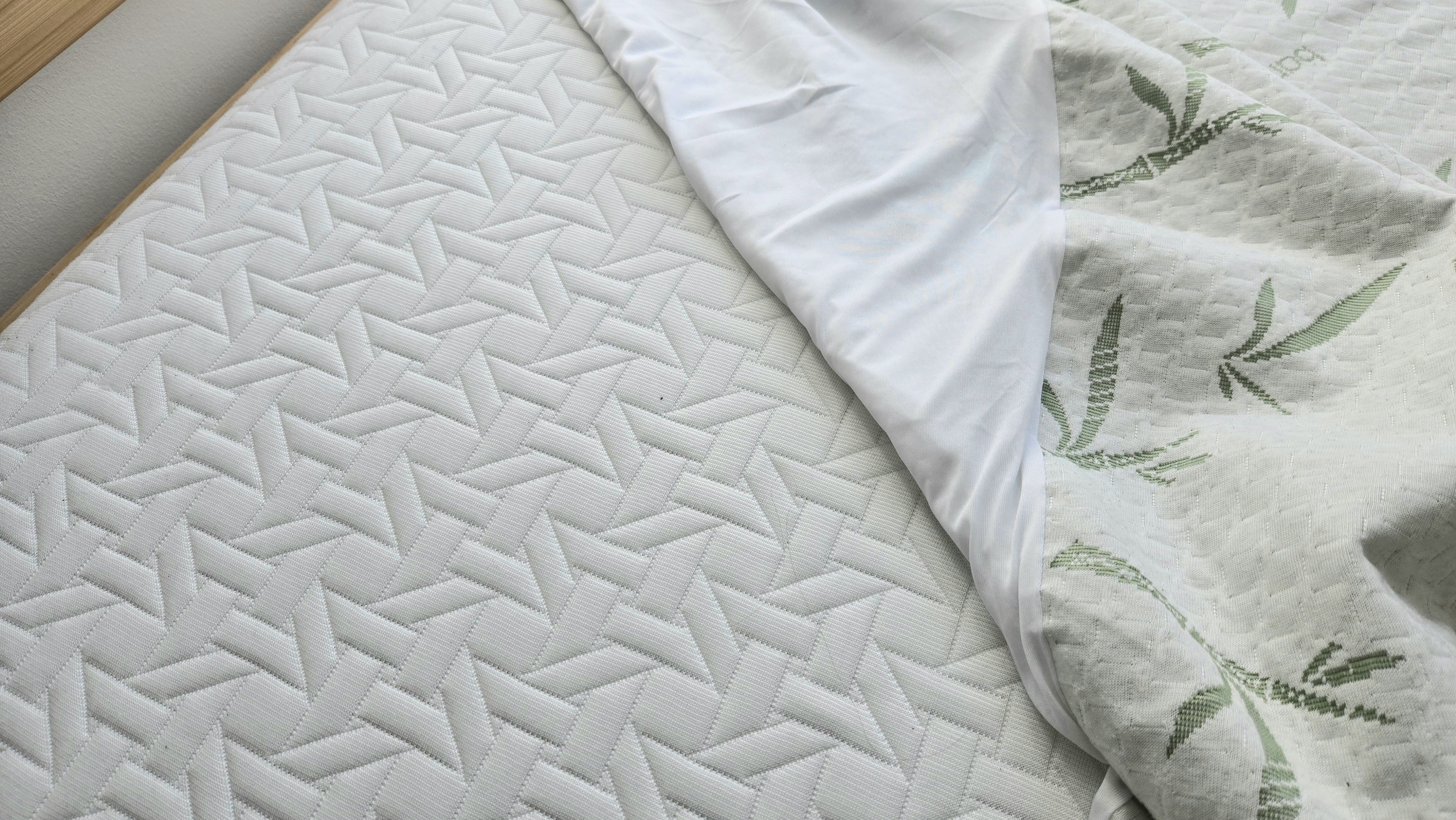
But we know it’s not all about practicalities. Perhaps you’re not finding your bed comfortable anymore and the constant tossing and turning is disrupting your sleep.
If that’s the case, and you think it’s too soon to buy a whole new bed, a mattress topper can be a great solution to improve the comfort and support of your mattress and prevent any need to throw it away prematurely.
What is an eco-friendly mattress?
An eco-friendly or sustainable mattress is one that not only uses sustainably sourced materials, but is also made by a business that operates in an eco-friendly way. This means:
- Reducing waste: Excess waste produced by businesses can harm the environment. Whether their physical waste goes into landfill or chemical waste pollutes the air, truly eco-friendly mattress brands will do all they can to reduce their impact. For example, Avocado Green have a zero waste policy, meaning everything gets reused and recycled.
- Using materials sourced within the country of manufacturing: A brand that uses materials made within the manufacturing country, like USA crafted mattresses, will reduce their impact on the environment because transport emissions will be lower.
- Recycling or donating returns and exchanges: Most reputable mattress brands offer a sleep trial after you’ve purchased a bed to ensure you’re happy with your choice. But if you’re not, and you return the mattress, where does it go? Brands like Saatva, Tempur-Pedic and Avocado will donate these mattresses to charities, or alternatively recycle them to prevent them from going to waste.
- Climate neutral: Mattress brands that have the status of climate neutral offset their carbon emissions by donating to or investing in green initiatives like renewable energy companies.

Lauren is an experienced writer and editor in the health and lifestyle industry and has led many campaigns and projects that deliver news, advice, and research on all things sleep. As the Sleep Features Editor for Tom’s Guide, Lauren writes, commissions and edits sleep and mattress content, from in-depth how-tos in sleep and mattress health to interviews with doctors and neuroscientists on the latest news in sleep. Lauren regularly tests new sleep tech and accessories to evaluate their effectiveness for getting good quality sleep and easing specific sleep struggles like nighttime anxiety. Alongside this, Lauren reports on the best mattress brands out there, like Helix, Saatva, and DreamCloud, helping readers find the right mattress for them and the best deals on them.
You must confirm your public display name before commenting
Please logout and then login again, you will then be prompted to enter your display name.
